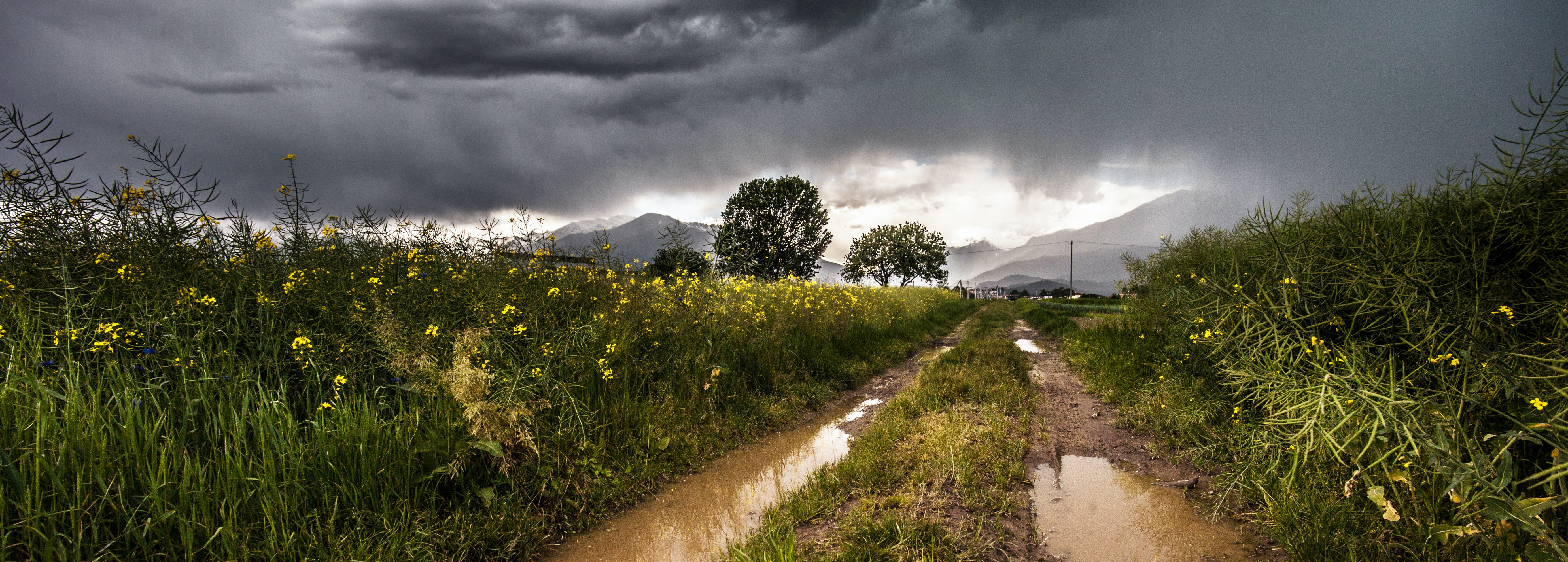When Cut Hay is Rained On

Few things are as upsetting in the world of hay production as a surprise rain shower or pop-up thunderstorm once your hay has been cut. While a brief sprinkling rain soon after the hay has been cut may not be cause for concern, downpours once the hay has partially or completely dried can be devastating if you’re not prepared.
First, let’s discuss the problems created by rainfall on cut hay. Quality loss is the most concerning issue surrounding rained-on hay. Rainfall leaches sugars out of plant tissues which reduces the level of soluble carbohydrates and overall energy content. Furthermore, the rewetting of partially dried forage reactivates plant respiration—a process which also causes plant sugars to be lost.

Added moisture from rainfall can also cause growth of microbial organisms. These organisms metabolize carbohydrates and can thus further reduce forage quality. If rained-on hay is not again dried fully, mold and mycotoxin growth can occur which can put livestock health at risk. Furthermore, baled wet hay can combust due to the temperature increase caused by microbial growth - putting a producer at risk of barn fire.
If hay has partially dried and become brittle, quality can especially be lost to leafy forage when rained on after being cut. The force of the rain shatters the leaves which are the highly digestible and high protein portion of the crop. Rainfall shortly after cutting is likely to be less of a problem.
So, what do you do if your cut hay is rained on? First you need to determine if the crop is salvageable. If the rain event was short-lived and occurred early in the drying process, it may be. If so, tedding it or at least using a rake to flip it for better drying is the first step to take. Tedding it will spread it out evenly for better air circulation and sun exposure. If you choose to flip it, make sure the top has a few hours to dry first.

The trick is to get it dry again as quickly as possible in order to reduce the amount of time for leaching of nutrients. Just remember that excessive tedding or raking of hay will result in material loss so be as efficient as possible.
Unfortunately, in some cases the hay will not be salvageable. So, what are you to do with it? If you are hoping to get another cutting within the season, the hay will need to be removed from the field. Leaving it will hinder or possibly prohibit new growth. It may be easiest to just bale it to be marketed as mulch hay to landscapers or highway departments. The bales can also simply be stacked and burned if that is permitted in your area. If you decide to burn baled hay, we strongly recommend the use of a natural fiber twine in the baling process.
If it is a light cutting, ruined hay can also be spread out on the field with a tedder, preferably after being chopped by a flail mower, and left to decompose, since it does provide some fertilizer value. Whatever choice is made, it is important for refuse hay to be dealt with. Left windrowed and wet, unharvested forage can serve as a dense mat on the field’s surface and interfere with the next year’s spring growth.
In conclusion, the best tip of all is to keep close tabs on the weather in your area before deciding to cut hay. Forecasting has come a long way and can be fairly reliable for the 3- to 4-day span required to harvest a field. It will serve any hay producer well to become familiar with available weather apps and to use them religiously. As they say, an ounce of prevention is worth a pound of cure, and we’re talking about a lot of pounds of cured hay when it comes to a successful harvest!
Sources
https://hayandforage.com/article-1389-first-you-cut-and-then-it-rains.html
https://onpasture.com/2015/06/22/how-bad-is-it-when-your-curing-hay-gets-rained-on-in-the-field/
Recent Posts
-
Boost Pine Straw Production Efficiency with Ibex Mini Round Balers
At Tractor Tools Direct, we're known for our high-quality hay equipment tailored for small farms …Dec 8th 2025 -
How to Winterize Your Tractor: Essential Maintenance Tips to Protect Your Investment
Farm equipment is one of the most valuable investments a farmer can make. At Tractor Tools Direc …Dec 1st 2025 -
Farm Tax ID Explained: Benefits, Eligibility, and How to Apply
As the end of the financial year approaches, it's a great time for small farmer operators to rev …Nov 12th 2025




